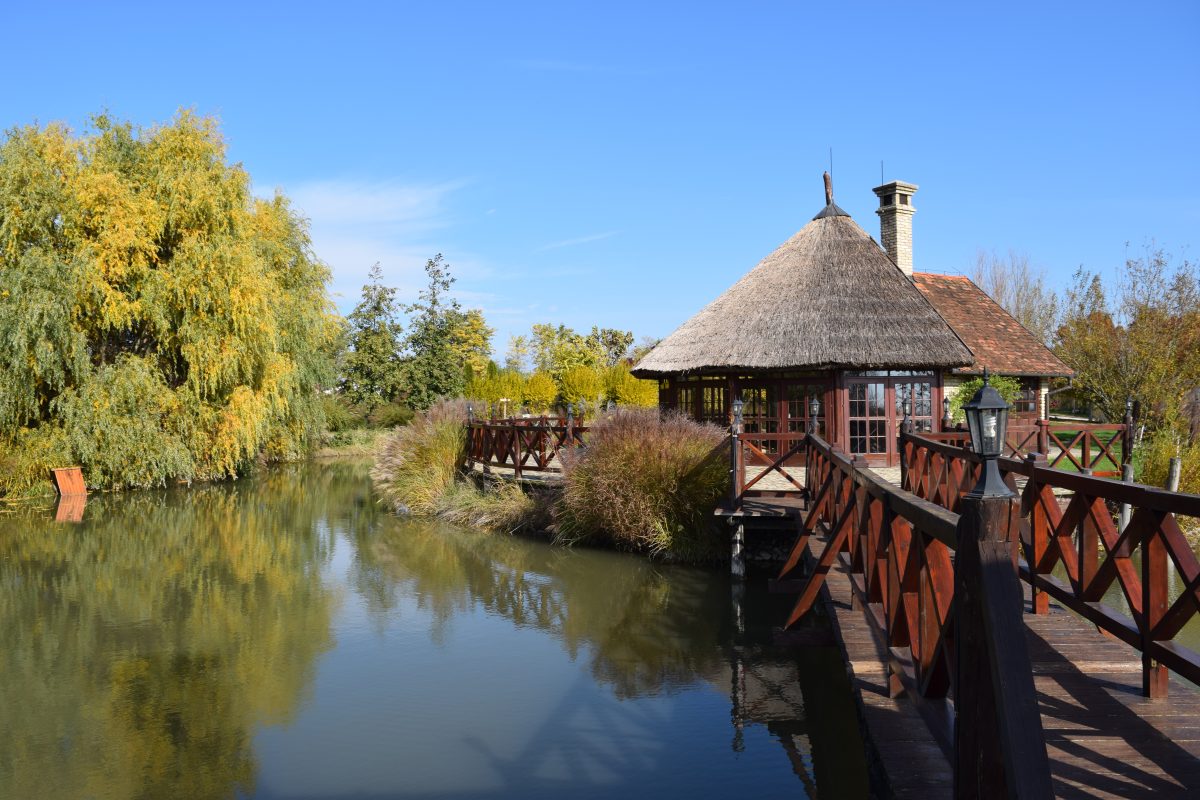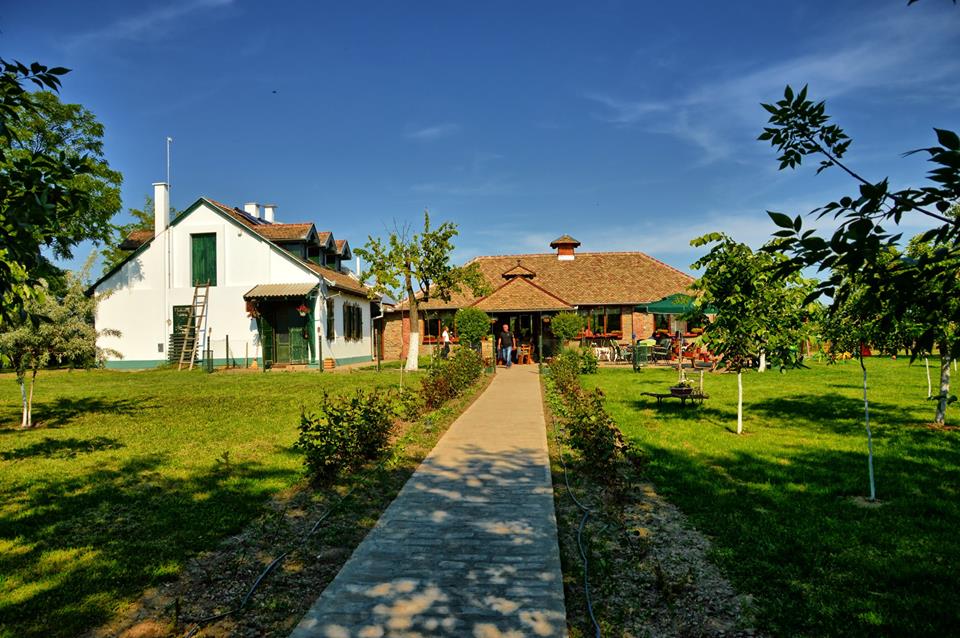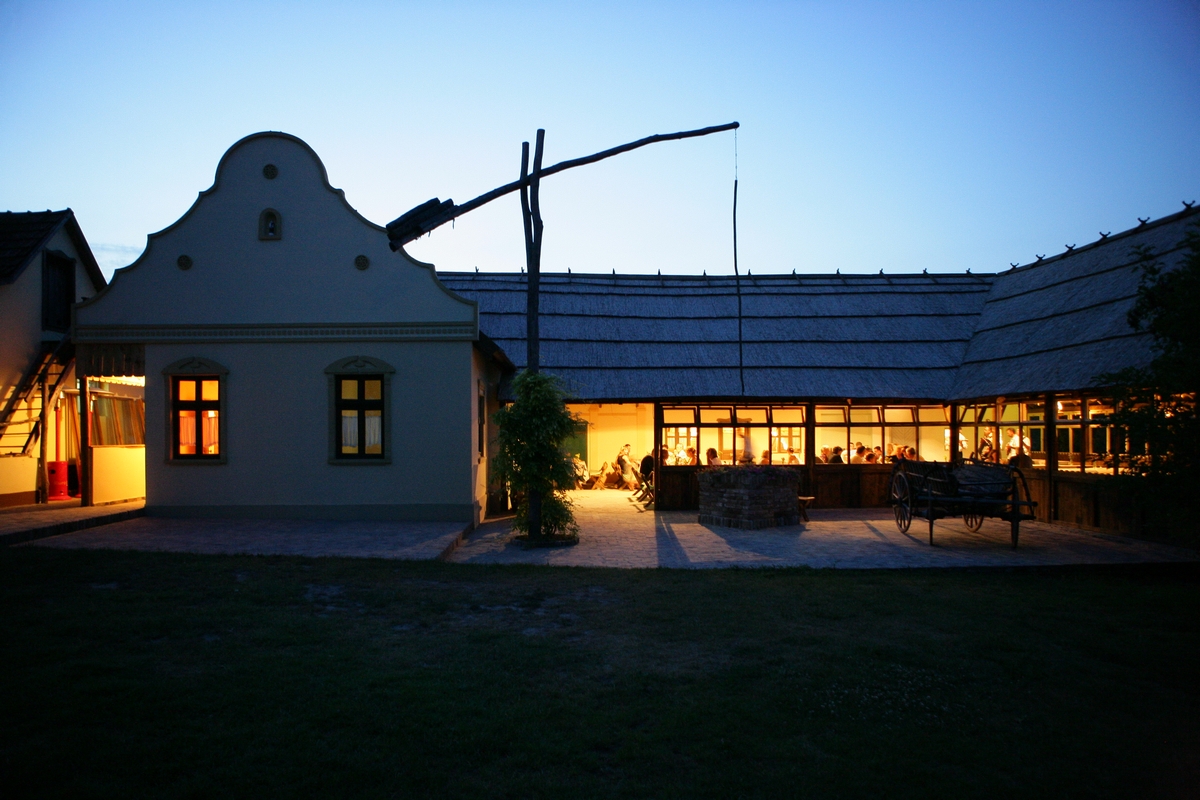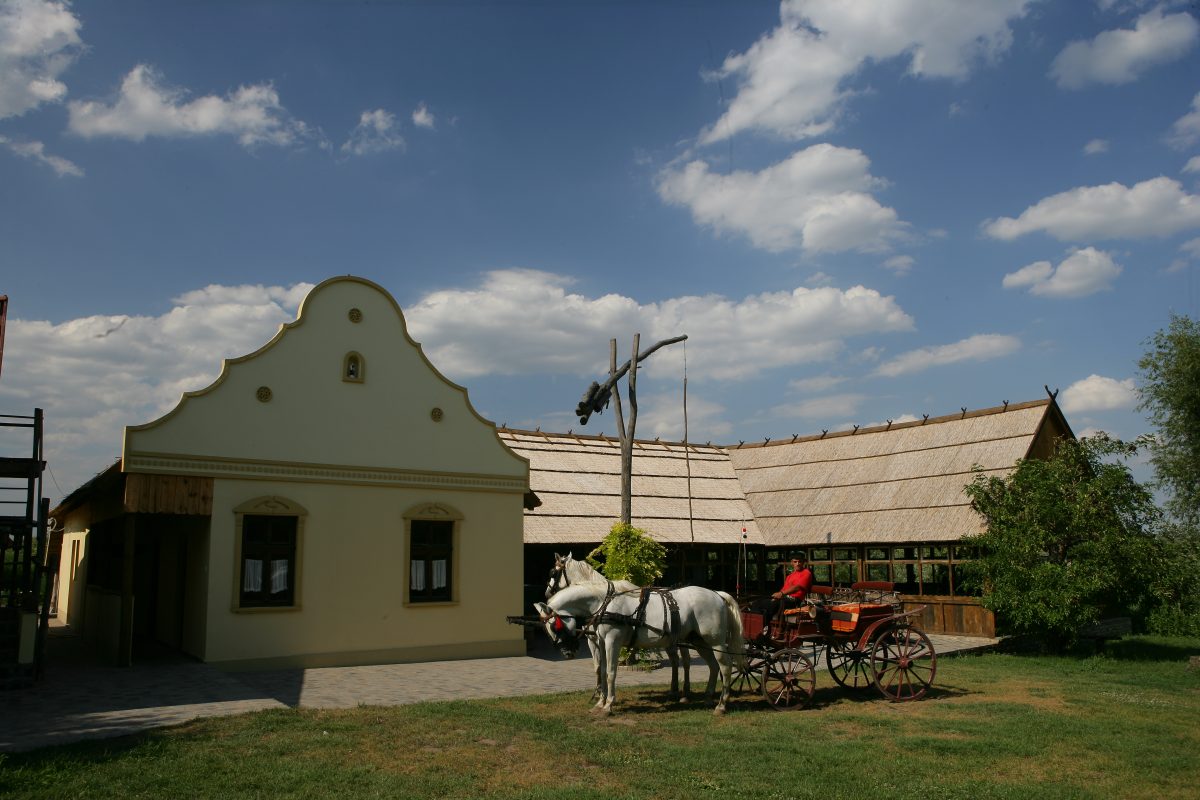Salaši emerged from the need of farmers, especially cowboys, to be close to the land. In these times, land was more frequently used for pasturage, which grass was used for nutrition of sheep and cows. In the beginning, they were just shelters from the rain and storms for people (light fences made of reed or wattle) and shelters for the cattle and enclosed spaces for horses and cattle

Salaš is a property on the field, with the object in which owners (workers) are settled and necessary economic buildings (often improvised) – stables, sheds and barns. Draw-well is inevitable part of such a property. Salaši emerged in middle age and they were present in all of Pannonia plain, from Alphas to Carpathian. The most typical and long lived are szalases placed in the plain of today’s Vojvodina, and its northern and eastern neighbors. The name originates from the Hungarian word “szállás” meaning house or accomodation. In this region, all such properties are called szállás, and in other parts of the world equivalent words would be ranch, hacienda, majur, baija, tanya…

Salaši emerged from the need of farmers, especially cowboys, to be close to the land. In these times, land was more frequently used for pasturage, which grass was used for nutrition of sheep and cows. In the beginning, they were just shelters from the rain and storms for people (light fences made of reed or wattle) and shelters for the cattle and enclosed spaces for horses and cattle). Later, when crop farming became its development, hence in the 19th century, salaši took different forms. A typical salaš had a building for the owner. It consisted of two rooms separated by the kitchen, a stable next to the house, hovel for cattle, tools and other engines, roost, pigsty, mow, barn, threshing floor for hay and straw, sanitary with the fence and a dump for manure. Depending on owner’s economic strength, salaši had more or less additional objects. They were noticeable from the distance, by their shadoof, device for taking water from the well, a kind of wooden cranes.

Salaši were places of hard work – from down to dusk. That’s why they were built that way – they enabled farmers to go to field, stable, pigsty, thrashing floor, as soon as they are awaken. They aware able to cultivate corps, take care of cattle, milk cows, make cheese and butter, prepare products for storage, grind corn, pluck geese, butcher pigs in autumns, make sausages…

During the wars and in other crisis times, they were abandoned, empty. To bring them to life after the II WW was very difficult. It was hard to provide for town and cities, and not to mention remote salaši. Hard life, separation from the other people and community, never-ending care for children and animals, made salaš people different from the villagers, and much more different from town people. However, salaš people are known by their patience, restrainedness, hard work, persistence and thoughtful decision making.
The golden era of salaši was the interbellum time. During the 50th years of last century, salaši became to decay, because of the state’s policy, agrarian reform, collectivization, inclusion of farmers into cooperatives. Some szalases were taken by the state, and some were destroyed. However, a lot of them survived but were impoverished, since the area of arable land for private owners, was limited to 10 hectares.

Then came era of agricultural modernization and tractors, land was closer to village and horses were rarely used. Some salaši were turned into large cattle farms, inappropriate for family life. Today, salaši in Vojvodina are usually weekend houses, restaurants, ethno-houses for holidays and recreation. They offer healthy and exotic food based on salaš tradition in animal breeding and preparation of the food. Salaši are places for more fun and less work, except from the hosts.
There are at least a hundred salaši in Vojvodina, and they are not only green oases on endless plain, but also hostels, restaurants, and these are the most popular: Salaš 137 on Čenej near Novog Sada, Salaš Katai near Mali Iđoš, Rokin salaš in Hajdukovo, Majkin, Sunčani and Cvetni salaš near Subotica, Salaš Stojšin near Krčedin, Dida Hornjikov salaš on Palić lake, Zekin salaš in Krčedin, Jelen salaš on Palić…
